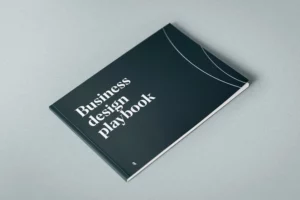There’s no doubt that plenty of innovation investment is taking place in Asia. Over the last decade, half of all global investment dollars were spent in Asia, and the region has given rise to 43% of the world’s 5000 largest companies. Yet we often hear our Asian clients ask:
Over the last 18 months, the Board of Innovation team in Singapore has doubled in size and partnered with some of the largest companies in Asia, while in a pandemic. This experience has taught us that innovation in Asia requires a different approach to Silicon Valley.
It’s often tempting for Asian leaders to mimic the methods of Silicon Valley companies, but simply copying giants like Facebook or Google doesn’t work. We need to understand how Asian cultures differ and adapt to its norms and mindsets. And while there’s no one-size-fits-all approach, there tends to be common themes.
So here are three ways innovation is different in Asia, and three ways to address them.
The boss is always right
If you’ve ever asked someone for feedback, you’ll know that innovation benefits from disagreements. Ideas get better when they are challenged. But what if the idea comes from your boss?
Dutch social psychologist, Professor Geert Hofstede, coined the term ‘power distance’ to describe how people view those in power. In high power distance cultures, people with lower levels of power follow the orders of those with higher levels, fearing the consequences of failing to comply.
For example, Singapore’s score of 74 means the “boss is always right” mindset is pervasive. Questioning one’s boss is unlikely even if the boss’ ideas are bad. Over time, people even start to think: “why bother with my own ideas when I can wait for them to come from my manager?”
However, dissent is necessary for great innovation. We need to debate and disagree in order to find new and inventive ways to solve a problem. Unfortunately, high power distance means few dare to speak up for the company’s good if it comes at the cost of their manager’s goodwill.
Don’t stand out
While conflict fosters innovation, cultures that avoid conflict with bosses also tend to avoid conflict among peers. Hofstede measured this conflict-aversion through a metric he termed individualism.
Singapore’s score of 20 hints at a more collectivistic society where aligning with the group consensus is more important than standing out. This manifests as a tendency to do things “as we’ve always done it” and to prioritise harmony over honest feedback. However, as research repeatedly shows, conflict improves both diversity and quality of innovative ideas
Failure is a weakness
Another key ingredient for innovation is the Asian four-letter ‘F’ word: fail. Failure is often seen as shameful, weak, and heavily penalised.
As Tim Chae, partner in California-based venture capital firm 500 Startups, puts it: “In Korea, starting from education day one, failure is not something you’re trained to love. You’re scared of it. That’s why you see people so willing to be middle of the road, the best college and a job at Samsung.”
When innovating, very few get it right the first time. The mantra of “fail fast, fail often” encourages pivoting quickly when an idea isn’t working. Fear of failure is the opposite to that approach, and discourages creativity and experimentation when failure is a possible outcome.
Three tips to encourage innovation in Asia
Culture doesn’t change overnight, and no magic bullet can shatter perceptions of power distance or failure. However, we can start by facing the reality of our culture and designing intentional workarounds. While we often work with clients to assess their innovation readiness, there are simple litmus tests you can try as well. Here are some tell-tale signs to look out for:
- Is the most senior person in a meeting usually speaking the most? Do other team members mostly stay silent?
- Do people play down mistakes to avoid seeming weak? Do managers react to mistakes harshly?
If you’ve noticed these signs, here are some ways to address them:
Instead of avoiding conflict, intentionally embrace it to create world-class ideas. Task specific members of your team to act as the devil’s advocate to find potential flaws in any idea or decision, and assign other team members to counter-propose how it can be improved to fix those flaws. Frequently rotate roles and set the expectation that feedback is provided for the idea, not the person.
One way to do this is to use our ‘Build it, Break it, Fix it’ tool to help steer the discussion.
This gives your team an institutional mandate for conflict. You empower those in lower levels of power to challenge ideas from the top, and in doing so, make them better.
Leaders need to create a welcoming environment for ideas. One option is an idea management system where anyone can submit ideas and be incentivised for successful ones — this frees the employee from fear of judgement or ‘repercussions’. For example, global semiconductor industry leader Micron rewards employees in Singapore for experimenting with new ways of doing things, such as through incentive programs that reach all the way to frontline factory workers. This empowers new improvements in safety and productivity without relying on top-down instructions.
In addition to merely soliciting ideas, companies can take it one step further by establishing internal platforms to incubate innovation. One such example is Singapore Airlines. Staff can submit ideas for evaluation through their KrisLab platform, and once an idea has been approved, the digital innovation lab team provides seed funding and expertise to develop the idea into a proof of concept.
Creating space to innovate doesn’t require a company-wide initiative. You can start in your own team. Try a ‘no judgement’ rule, where saying things like “that’s a bad idea” or “that won’t work” is disallowed. Invite experimentation by sharing your past mistakes and what you learnt from them. This sets the tone that mistakes are accepted, and welcomes learning from failure.
Instead of relying on the boss for the final say, rely on the customer instead. Embed constant customer feedback in the development of any new idea, and use it to strengthen ideas regardless of their source.
One prime example comes from DBS’s user experience and design team. In response to a surge in log-ins near the end of the month, the DBS team introduced the ‘peek balance’ feature, where users were able to check that their salaries had been deposited without the hassle of logging in. While the team admitted that their stakeholders didn’t like it at first, the feature has since been used 17 million times per month in 2021.
While internal stakeholder management is important, it is also important to recognise that your boss may not always be right.

Looking to start incubating innovation?
Check out our Business Design Playbook to get you started
Unlock great innovation in Asia
The key to unlocking great innovation in Asia is understanding the unique opportunities and challenges Asian cultures offer. While organisational change doesn’t happen overnight, any of us can try these tips within our teams today to start seeing results tomorrow.


